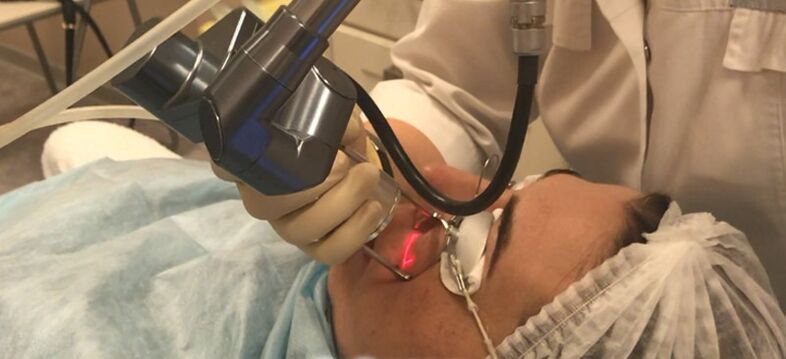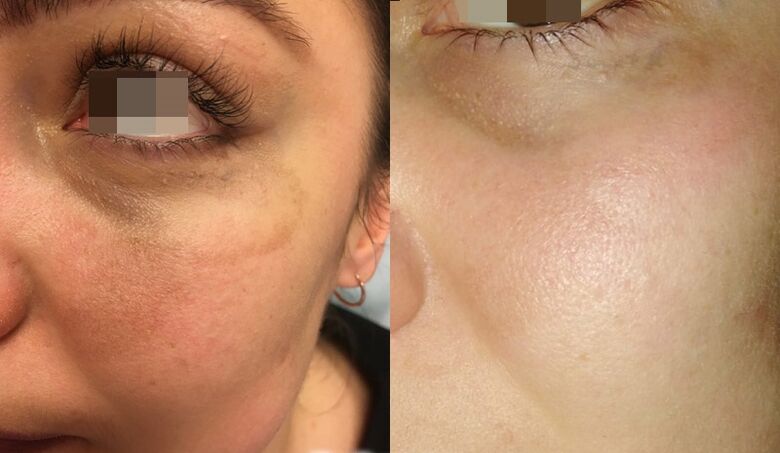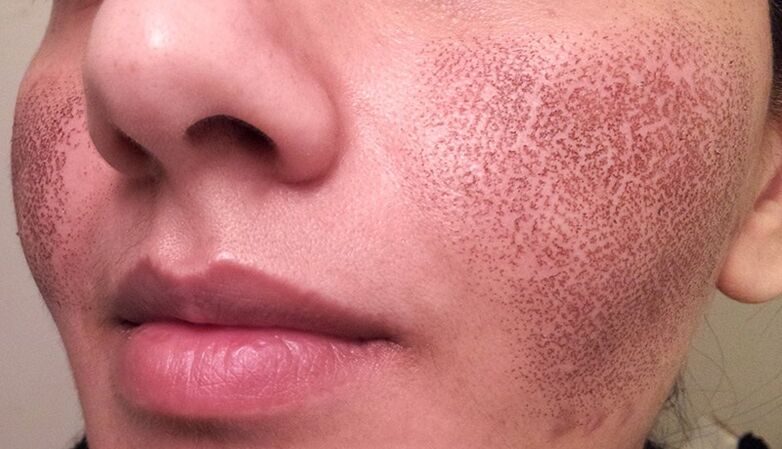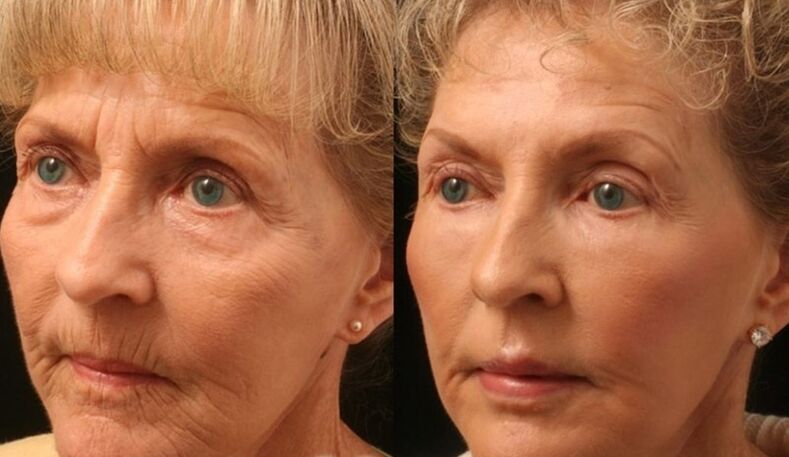
Who does not dream of young, beautiful and healthy skin? Unfortunately, her aging is an inevitable process. With age, elasticity is lost, pores enlarge, wrinkles and age spots appear. How to deal with this, and is it possible to do without surgery?
One of the most effective options is fractional laser thermolysis. This is a non -surgical rejuvenation procedure that can solve a variety of age -related and aesthetic problems, including smoothing wrinkles and repairing scars.
How it works?
The photothermolysis procedure is based on the direct action of a laser beam, divided into several hundred best rays (so -called fractions, hence the name). Upon reaching the target skin part, it causes minor and tightly controlled temperature damage.
In response to this microtraum, the process of natural regeneration begins. There is an increase in the production of collagen - the protein responsible for the color and elasticity of the skin. The damaged coating is completely renewed. The result - a significant rejuvenating effect, which is obtained mainly due to the activation of our body's natural internal resources.
Instructions for fractional thermolysis
With this procedure you can:
- smooth out fine wrinkles;
- improves skin tone, making it more elastic;
- corrects relief: narrow pores, removes acne scars (after acne), minor stretch marks, scars after burns or wounds and other scar defects;
- relieve pigmentation, melasma (including age -related);
- perform a complete laser exfoliation - from the superficial surface to the re -surface.
In general, fractional thermolysis is a universal technique, it is suitable for patients of all ages and is considered an ideal choice for those who want to get a refreshing effect, but are not ready to go to a plastic surgeon. It is allowed to work on the face, including the area of the eyelids and delicate skin around the eyes, and on the body - for example, with the neck, décolleté or hands.

What devices are there
Photothermolysis is performed using various CO2 and erbium lasers, two of which need special attention:
- Fraxel - has long been a leader in the category, and its name has become a household name for fractional rejuvenation procedures. Today it is considered obsolete, although quite effective. It has several types (re: store, re: fine, re: pair) designed to work with different skin types and at different depths.
- Mixto is a new generation laser and the "gold standard" of today. It differs from Fraxel in wavelength, and also uses a special beam crossing. Therefore, in all respects, it surpasses its well -known predecessors: the procedure becomes more comfortable and safer, fewer sessions are required, and recovery is faster.
There are also many analog devices, especially those of Asian origin. They may be similar to Fraxel and Mixto in terms of the principle of action, but they are always lower in safety, as they do not have precise settings for the fraction, intensity and depth of ray penetration.
How is the procedure
The session begins with a consultation with a beautician, where hints and other nuances are determined. No special training is required, so you can continue working with the laser:
- The first step is to clean the skin. An anesthetic (usually a lidocaine -based gel) is then applied to the target area.
- Patients and beauticians wear special glasses to protect the eyes from accidental laser exposure.
- Next, the doctor adjusts the device - setting the depth of penetration, force in joules, pulse frequency and other parameters. They are selected depending on the problem to be solved.
- After that, the beautician gently moves the top of the desired skin, supplying the same fraction of light to it. This is somewhat uncomfortable (depending on the individual’s pain sensitivity), but it is generally acceptable - often patients describe the sensation as a tingling or burning sensation.
- The entire procedure, excluding preparation, takes about 20 minutes, the exact time depending on the size of the treated area. Once done, a soothing cream is applied to the face. You can go home and return to your normal routine with minimal restrictions.
How long is recovery after fractional thermolysis and how to treat your skin over the years?
Up to 24 hours after the session, redness remains on the face, sometimes slightly swollen. Apparently that’s what happens when someone is slightly sunburned. Fear not, this is a natural reaction that indicates the launch of the rejuvenation mechanism.

The next day, typical brown spots appeared. And on the third day, another indication of a change has appeared - micro -exfoliation of the skin (exfoliation of old surface particles), which, however, passes quite quickly. Also, for 1-2 weeks after the session, the bronze may persist, i. e. the tanning effect.
There are some post -procedural restrictions, but it is very important to observe them, otherwise there is a risk of not only not getting the desired effect, but also facing complications:
- For 2-3 weeks, you can not sunbathe, including in the solarium, and even go to the bath / sauna (on the eve of the session, you can). At the same time, fractional thermolysis itself was only performed during that period without active sunlight.
- Moisturizing cosmetics (light creams that will not clog pores) should be applied on the treated area in the first few weeks.
- It is very important to protect the treated skin from strong mechanical stress. Until complete healing, exfoliating solutions and scrubs, creams with acids are prohibited. If you are not peeling off the exfoliating scales, scratch or rub intensively the area where the laser thermolysis is performed.
The rejuvenating effect grows and reaches its peak in a month. To get full results with a Fraxel laser, in most cases, procedures 3-6 are required. Mixto overcomes minor defects in 1 session, with more serious ones - in 2-3. The interval between them is a few weeks until the skin has time to fully recover.

The end result has no "law of limitations", but it is logical that over time, under the influence of age and external factors, the condition of the skin will worsen.
Contraindications, complications and side effects
Like other hardware correction methods, fractional thermolysis is not performed in the following cases:
- oncological diseases;
- epilepsy;
- inflammatory processes on the skin in the target area (neurodermatitis, psoriasis, atopic dermatitis);
- fresh herpetic eruptions;
- acute infectious diseases;
- middle-line skin or in recent chemistry, mechanical dermabrasion;
- periods of pregnancy and lactation.
Regarding complications and side effects, the most common is an increase in pigmentation in the treated area. Fraxel, another laser from the previous generation, with incorrect settings, can cause quite serious burns, resulting in the appearance of deep scars. Mixto does not pose such a problem.
Even so, the effectiveness and safety of the procedure still depends a lot on the beautician: the doctor must understand what exactly, why and how he or she does it with such a powerful tool. Therefore, the way to protect from complications and unwanted consequences is very simple - contact only an experienced specialist who knows how to work with modern lasers.
What is the cost of fractional thermolysis?
The cost of the service depends on several factors: the brand of device used for laser correction, the number of areas treated, the duration of the course, and the qualifications of the specialist. Ask your beautician for the right amount.
























